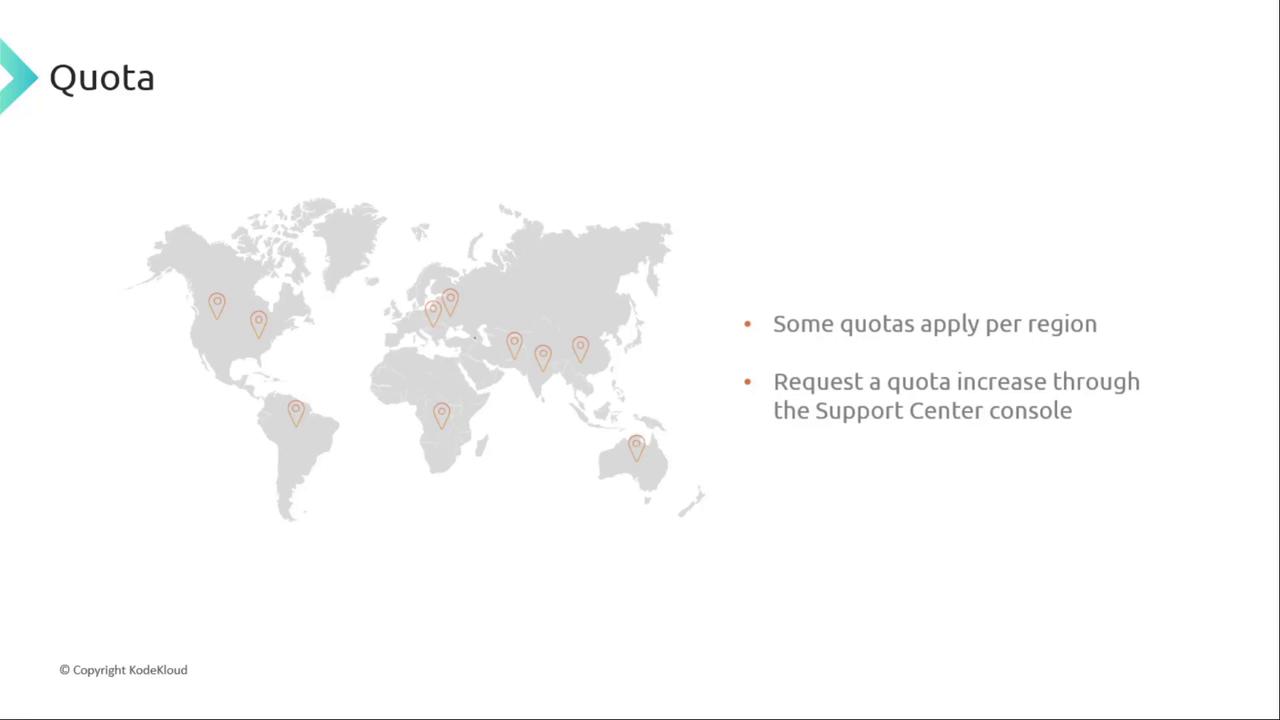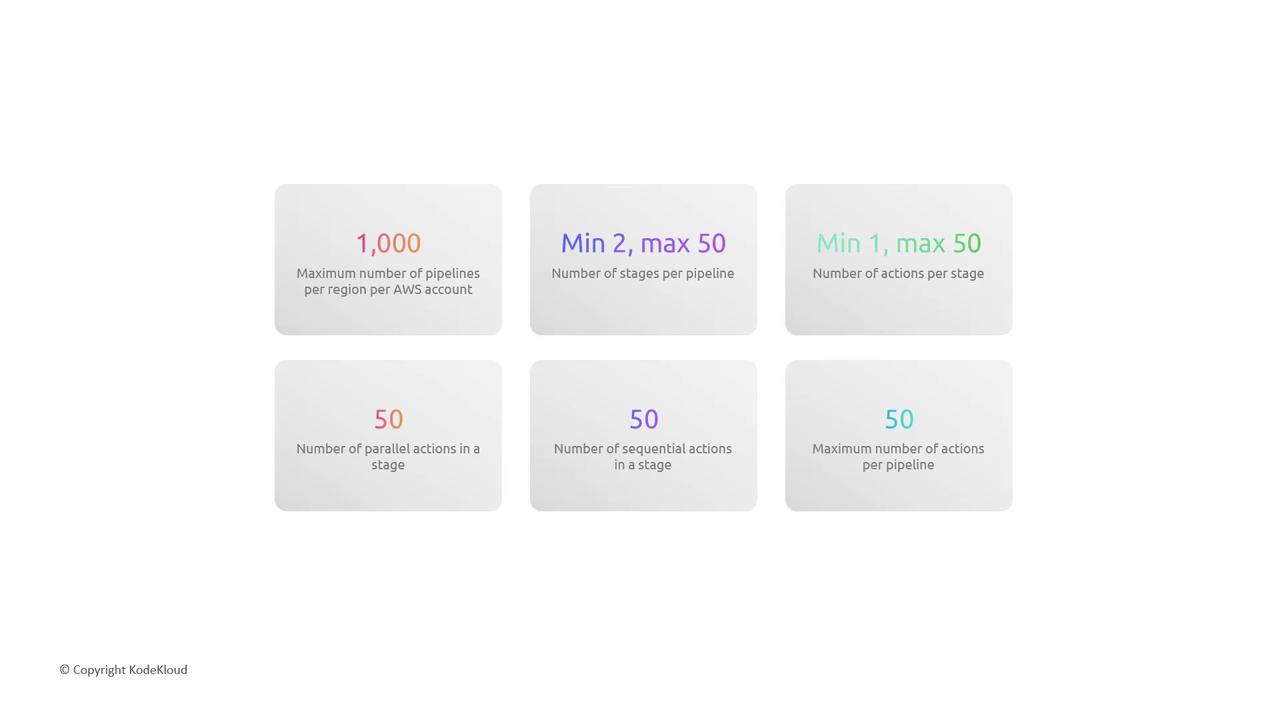AWS CodePipeline (CI/CD Pipeline)
CICD Pipeline with CodeCommit CodeBuild and CodeDeploy
CodePipeline Limitations
In this guide, we’ll walk through the key limitations, quotas, and naming rules for AWS CodePipeline. Understanding these restrictions is critical for designing scalable, reliable CI/CD workflows.
Unique Naming Constraints
Every pipeline, stage, and action name must be unique within its scope:
- Pipeline names must be unique per AWS account and region.
- Stage names must be unique within a pipeline.
- Action names must be unique within their stage.
You can reuse common stage names (for example, Source or Deploy) across different pipelines, but you cannot duplicate them inside the same pipeline.

Note
Choose descriptive stage and action names to improve pipeline readability and troubleshooting.
Regional Quotas and Requesting Increases
Most CodePipeline quotas are applied per AWS Region. For example, the default limit of 1,000 pipelines refers to pipelines per region.

Warning
If you hit a regional quota, you can request an increase via the AWS Support Center. Approval may take up to two weeks.
Core Service Limits
Below are the default CodePipeline quotas you should plan for in each region:
| Resource | Default Limit | Scope |
|---|---|---|
| Pipelines | 1,000 | Per account per region |
| Stages per pipeline | 2–50 | Per pipeline |
| Actions per stage | 1–50 | Per stage |
Actions within a stage can execute in parallel or sequentially. The only overall cap is the per-stage limit.

Additional Considerations
- Manual approval actions will time out after 7 days without a decision.
- Artifacts are typically stored in Amazon S3. While S3 supports virtually unlimited objects, general S3 limits still apply.
For the full list of quotas and best practices, see the AWS CodePipeline Limits documentation.
Links and References
Watch Video
Watch video content